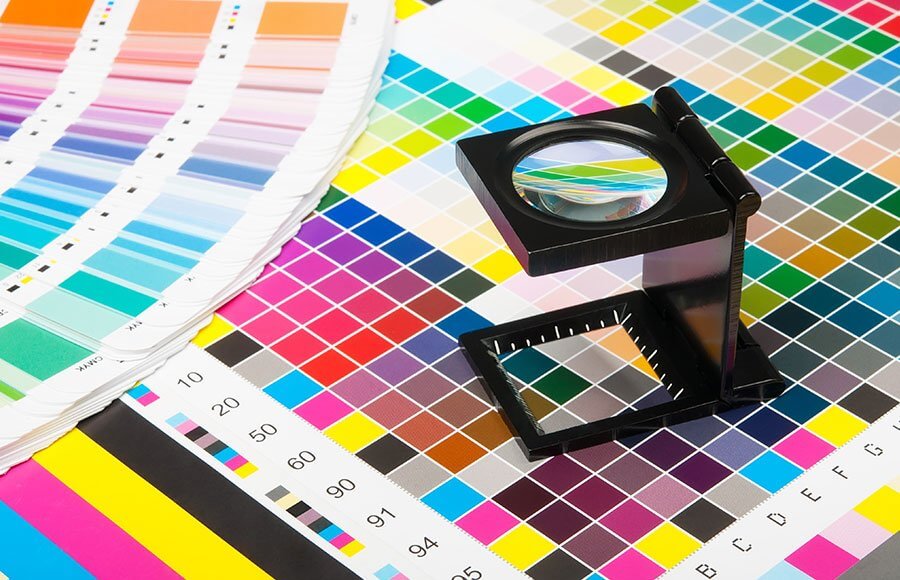Premium litho printing Services for Professional Results
Premium litho printing Services for Professional Results
Blog Article
A Comprehensive Guide to Recognizing Litho Printing Techniques
The globe of litho printing, a method stemming from the late 18th century, is a fascinating blend of background, scientific research, technology and art. This thorough overview will certainly unravel the intricacies of this printing approach, from the make-up of litho inks to the challenges faced in modern-day applications. As we venture into the complexities of lithography, the value of automation and sustainability in ensuring its future relevance becomes significantly clear. Remain with us as we journey right into the fascinating realm of litho printing.
The Historical Advancement of Litho Printing
The historic trajectory of litho printing, an essential technology in the realm of communication, is an exciting story of human ingenuity. The process advanced with the development of the rotating press, which greatly boosted productivity. Each phase of litho printing's development showcases humankind's unrelenting pursuit of efficiency and top quality in aesthetic interaction.
Translating the Science Behind Litho Printing Inks
Progressing in the exploration of litho printing methods, the focus now shifts to the scientific research behind litho printing inks. The make-up of these inks, their drying out process, and color mixing methods create the foundation of this complex art kind. Recognizing these aspects is crucial to understanding the craft and attaining the wanted print results.
Composition of Litho Inks
In lithographic printing, the basic function of litho inks can not be overstated. Pigments, the color-providing aspects, are carefully ground fragments suspended in the automobile, a liquid that brings the pigment onto the printing surface area. Each part plays a vital component in the final print's quality, making the precise formulation of litho inks an elaborate scientific research.
Ink Drying Refine
From the structure of litho inks, focus transforms to the fascinating procedure of ink drying out. The drying procedure is important, as it impacts the last print's top quality and durability. Two key approaches are made use of in litho printing: oxidative drying out and absorption. Oxidative drying out includes the ink reacting with oxygen airborne to create a difficult, dry movie. This technique provides a sturdy finish, however can be slower contrasted to absorption. Absorption, on the other hand, includes the ink permeating right into the paper fibers, which is a much faster procedure however can bring about much less lively colors. The choice in between these techniques is dependent upon variables such as print rate demands, the paper kind used, and the preferred coating.
Color Combining Techniques
While the drying process plays an essential function in litho printing, the scientific research of shade mixing methods holds equivalent relevance. The scientific research behind litho printing inks additionally takes into account the transparency of the ink, which influences exactly how shades overlay and mix.
The Art and Design Components in Litho Printing
Litho printing breathes life into art and style via its special elements. Litho printing suits a range of colors, enabling artists to develop dynamic and dynamic prints. This mix of precision and flexibility makes litho printing a recommended option for lots of musicians and developers.
Modern Applications of Litho Printing Techniques
Litho printing methods have actually discovered extensive usage in the modern commercial sector. Its impact and value remain to grow with the introduction of brand-new innovations and modern technologies in the click site field. This area will certainly explore these contemporary applications and the transformative function they play in the printing sector.
Business Litho Printing Utilizes
In today's electronic age, one might wonder regarding the relevance of standard printing techniques. Yet, litho printing continues to be an important part of the commercial market. High-volume printing jobs, such as the manufacturing of books, newspapers, and packaging, count on litho printing for its capacity to deliver exceptional picture high quality and expense performance. The process, which entails transferring an inked image from a plate onto a rubber covering and afterwards to the printing surface, uses unequaled uniformity. This makes it excellent for tasks needing a large print run. Litho printing also offers a wide color range, premium to that of digital printing. This makes it the best choice for jobs that demand vivid, high-grade shade recreation.
Technologies in Litho Printing
Pushing the borders of conventional techniques, modern-day improvements have fueled a host of innovations in litho printing. One noticeable growth is digital litho printing, which incorporates the merits of electronic modern technology with litho's premium output. These advancements emphasize the enduring significance of litho printing in the modern-day world.
Discovering the Refine of Litho Printing: Detailed

Challenges and Solutions in Contemporary Litho Printing

Regardless of the accuracy and custom that litho printing happily upholds, it is not without its set of modern obstacles. The most common concerns consist of the high first setup expense, difficulty in printing variable data, and ecological problems as a result of chemical usage. Remedies are emerging as modern technology advances. Digital litho printing allows for economical brief runs and simple modification, addressing the problem of variable data. Environmentally-friendly inks and much safer plate-making procedures mitigate environmental problems. Additionally, advancements in automation have look at these guys actually minimized labor expenses, further democratizing the lithography procedure. Therefore, while there are obstacles, the litho printing market is proactively adapting to meet them head-on, guaranteeing its relevance in the future.
Conclusion
In verdict, litho printing, with its abundant history and clinical complexities, holds a substantial location in the print sector. The future of litho printing pivots on its ability to adapt to these transforming needs, verifying its long-lasting worth in a progressing market.

Report this page